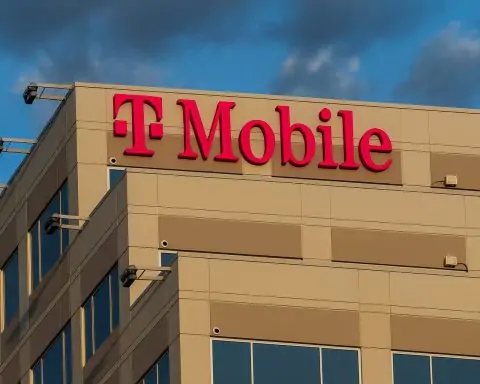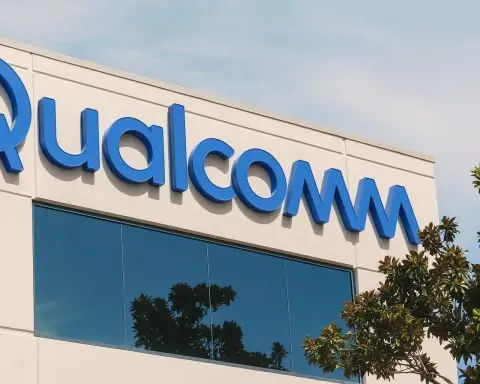- Stock: Cambium Networks Corporation (NASDAQ: CMBM).
- Date/Movement: On Oct 29, 2025 CMBM closed at $2.95, up +377% from the prior close [1]. After-hours it spiked further (pre-market Oct 30 around $5.80 [2], $6.69 in late trading [3]). By midday Oct 30 shares remained volatile at multi-dollar levels.
- Recent News: On Oct 29 Cambium announced integration of its ONE Network platform with SpaceX’s Starlink satellite service [4], triggering the rally. Earlier, it disclosed a Nasdaq delisting letter (due to sub-$1 share price and late filings) [5] [6], and a CFO transition (Jacob Sayer’s departure Sept 5, 2025) [7].
- Financials: Trailing-12-month revenue ~$172M, net loss -$98M, EPS -$3.52 [8]. Q2 2025 saw $40M in customer shipments and $47M in new orders (6% q/q) [9]. Company forecasts ~ +$184M (2024) and ~$221M (2025) revenue if new products gain traction [10].
- Analysts: Only two analysts cover CMBM (one Buy, one Sell) implying a Hold consensus [11]. MarketBeat shows a consensus “Buy” rating with a ~$3.00 target [12] (implying ~+300% upside). AI-powered TipRanks cites “declining revenues, negative profitability, and increased leverage” as key risks [13].
- Valuation: Extremely low relative to peers. Cambium trades at roughly 0.1× sales (EV/sales ~1.9×) vs ~1.3× (4.7×) for networking peers [14] [15]. By comparison, rival Aviat Networks trades around $24 (market cap ~$250M) [16] while Cambium’s market cap is ~$83M [17].
- Bull vs Bear: Bulls point to the huge upside (wireless/Wi-Fi market growth, Starlink integration, valuation gap), while bears warn that nasdaq delisting, cash burn and competition remain serious threats [18] [19] [20].
Starlink Integration Sends Stock Soaring
On Oct 29 Cambium announced that its ONE Network solution now integrates SpaceX’s Starlink LEO satellite internet [21]. The press release explained this enables “scalable management, visibility, and performance optimization” for enterprise Starlink connections, including multi-WAN bonding, advanced security, and centralized monitoring [22] [23]. In other words, Cambium customers (e.g. schools, businesses, service providers) can now combine multiple Starlink links into their wired/wireless networks using Cambium’s cnMaestro and NSE platforms.
Investors viewed the tie‑up as a game-changer. At market close on Oct 29, CMBM was $2.95, a +377% jump from the prior day [24]. (Just before the rally, shares were ~$0.62 [25].) In after-hours trading the stock spiked over +126%, reaching about $6.69 [26]. Pre‑market on Oct 30 it was around $5.80 [27]. By midday Oct 30 the stock was volatile around multi‑dollar levels. As TipRanks noted, the surge is partly tied to “connections to Musk” (Starlink’s parent), which tend to attract speculative buying [28] [29]. Trading volume exploded – Benzinga reported over 115 million shares traded, versus a 3‑month average of ~0.25 million [30].
The Starlink move also illustrates Cambium’s strategy in the growing satellite-enabled networking market. Industry forecasts suggest satellite internet could see double-digit annual growth – the market is projected to expand over 10% per year through 2032 (to ~$25 billion) [31]. AInvest notes that by integrating Starlink, Cambium “is positioning itself at the forefront of a market poised for explosive growth” [32]. The company touts use cases in agriculture, logistics, education and other remote areas needing resilient connectivity [33].
Nasdaq Delisting & Executive Changes
The windfall from Starlink arrived amid serious governance concerns. On Oct 16 Cambium confirmed it had received a Nasdaq Staff Determination Letter (dated Oct 10) saying its shares are subject to delisting [34]. This followed more than 180 consecutive trading days under the $1.00 bid-price requirement, and also missed SEC filings for 2024-2025 (annual 10-K and Q1/Q2 10-Qs) [35] [36]. The letter does not trigger immediate suspension, but places Cambium on a precarious footing. The company says it will formally request a hearing (and brief suspension extension) to seek continued listing [37].
Cambium’s filings delays also forced the resignation of its long-time CFO. In late Aug 2025 the company announced CFO Jacob Sayer would leave on Sept 5, 2025, with VP Finance John Waldron taking over as interim CFO [38]. The stock market is sensitive to such governance issues. As Finimize warned, Cambium “trades at a deep discount but faces big risks with late filings, steep losses, and tough competition” [39]. TipRanks’ analysis similarly flagged “material weaknesses” and cash shortfalls as red flags [40].
Product Pipeline and Market Context
Prior to October’s events, Cambium had been quietly rolling out new hardware aimed at its wireless ISP (WISP) and enterprise customers. On Oct 14 it launched two gigabit-class subscriber radios (Force 4518 and 4616) for fixed-wireless networks [41]. CEO Morgan Kurk said the new radios represent “the latest innovation… as we continue to help WISPs grow their business… and deliver on the promise of economic scalability” [42]. And just weeks earlier (Sept 24) Cambium expanded its portfolio with Wi-Fi 7 access points, anticipating early enterprise and service-provider demand. These moves tap into broader industry trends: global WLAN spending is expected to grow double-digits, fueled by Wi-Fi 7 deployments [43]. The fixed-wireless access market is also booming – it was ~$36.5 billion in 2024 and is forecast to hit $127.6 billion by 2032 (CAGR ~17%) [44], driven by rural broadband demand. Cambium positions itself as a value player in that space (serving rural telcos, WISPs, etc.), complementing big vendors like Cisco, Ubiquiti and Huawei [45].
Financial Results & Outlook
Cambium’s financials have been under strain. In recent quarters it has reported roughly $40–46 million in quarterly revenues, with gross margins around 30–40% but operating losses in the high single-digit millions. For example, Q3 2024 revenue was $43.7M (down 5% q/q) with a GAAP net loss of $9.7M [46]. The Q2 2025 business update (unaudited) confirmed $40M in shipments (flat q/q) and $47M in new orders (up 6%) [47]. Distributors were clearing excess inventory (channel sell-through +17%) [48]. However, trailing-12-month financials remain weak: total revenue ~$172M, net loss -$98M, EPS -$3.52 [49].
Looking ahead, analysts are cautiously optimistic if Cambium can execute its plans. Finimize cites consensus estimates that revenue could rebound to ~$184M in 2024 and ~$221M in 2025 [50] – aided by 5G/FWA demand and new Wi-Fi 6/7 projects (e.g. a nationwide Wi-Fi deployment in Morocco). The company says Q3 earnings will be released Nov 6, 2025 (covering September quarter) [51]. On the cost side, Cambium cut spending this year; it invested $35M in R&D in 2024 but trimmed operating costs elsewhere [52]. Notably, Q3 2024 saw a swing to positive operating cash flow ($8.9M) which helped boost cash reserves to ~$46.5M [53]. With ~$18.7M cash on hand at end-2023 (substantially raised by Q3 2024) [54], the company has some runway – but still burns cash each quarter.
Margins have been improving: Q2 2024 non-GAAP gross margin was ~33%, up to ~42% in Q3 [55]. Cambium says it is targeting breakeven EBITDA by 2025 [56]. If it can return to profitability and fix compliance issues, the extreme low valuation could reverse. As Finimize notes, Cambium’s EV/Sales (~1.9×) is far below the sector average (~4.7×) [57].
Analyst Commentary and Targets
Wall Street coverage is thin. Only two analysts publicly cover CMBM. One has a Buy rating and another a Sell, which yields an official Hold consensus [58]. MarketBeat shows an average 12-month price target of about $3.00 [59], roughly +360% above pre-surge levels. (StockAnalysis likewise noted one analyst with a $3 target [60].) In other words, even after the 377% pop, the consensus target is near where the stock peaked – implying high volatility if expectations slip.
Several independent analyses echo caution. TipRanks’ AI model gave a Neutral (41) rating, warning of “significant financial challenges, with declining revenues, negative profitability, and increased leverage posing risks” [61]. Finimize emphasizes the “governance red flags” from Nasdaq notices [62]. On the bullish side, some see long-term upside: Cambium’s stock currently trades at only ~0.1× forward sales, far below networking peers [63], which “leaves huge room for recovery” if growth materializes. One TS2.tech analysis argues the average price target ($3) implies ~+385% potential upside [64].
Industry and Competition
Cambium operates in a niche of enterprise Wi-Fi and fixed wireless infrastructure. It competes indirectly with large networking firms (Cisco, HPE/Aruba, etc.), and more directly with specialized wireless vendors (Ubiquiti for Wi-Fi, Aviat for point-to-point radios, CommScope for general broadband gear). The entire market is growing: IT research shows enterprise WLAN revenue up ~12% in 2025 on Wi-Fi 7 rollouts, and fixed-wireless adoption is booming in underserved areas. Cambium’s “ONE Network” strategy (unifying its wireless access, point-to-point, and SD-WAN products) aims to capture that demand, especially among rural ISPs and municipal networks. Its newest products (Wi-Fi 7 APs, starlink-enabled gateways) are tailored to these trends. For context, rivals like Aviat Networks now trade around $24 (market cap ~$250M) [65], reflecting a much healthier state. Cambium’s peers in broader telecom (Ciena, Arista, CommScope) also generally saw gains in the same Fed-driven market rally, whereas Cambium’s stock was essentially a penny stock until Oct 29 [66] [67].
Bull vs Bear Cases
Bull Case: Valuation is dirt-cheap; at ~0.1× sales Cambium is a deep discount to peers [68] [69]. If the Starlink integration and new Wi-Fi 7 products capture real demand, revenues could jump. Cambium also highlights operational leverage: its gross margins have already risen sharply (31%→40% in late 2024 [70]), and management targets positive EBITDA by 2025 [71]. The addressable market (enterprise fixed broadband + satellite connectivity) is growing rapidly [72] [73]. Some bullish analysts note that a $3 share price is within reach if Cambium regains compliance and continues winning new projects (MarketBeat’s lone “Buy” target).
Bear Case: The risks are acute. The Nasdaq delisting process is ongoing [74] [75] – missing another filing deadline could trigger forced trading suspension or move to OTC, wiping out institutional interest. Cash burn remains high; if growth doesn’t accelerate, Cambium may have to raise funds by dilutive equity or debt, further pressuring the stock. Competition and scale are worries: rivals have deeper pockets (Cisco/HPE can outspend Cambium on R&D), and fast-moving technologies may leave Cambium behind. As Finimize bluntly put it, Cambium’s revival hinges on fixing its “financial house,” with any slip-up leading to a very rocky road ahead [76] [77]. Investors remain on edge: 92% of CMBM shares are held by institutions, but some large holders (like Federated Hermes) have been trimming positions amid the uncertainty [78].
Outlook
In the near term, all eyes are on Nov 6, when Cambium reports Q3 2025 results. The company will need to demonstrate tangible progress on sales (perhaps bolstered by Starlink momentum or Wi-Fi 7 uptake) and clearly commit to fixing its reporting lapses. Analysts and investors will weigh the earnings details against the backdrop of recent headlines. If Cambium can regain Nasdaq compliance (possibly via a reverse stock split or sustained $1+ trading) and the new technology gains traction, the stock could pull back its penny-stock discount. However, if regulatory and cash concerns persist, the wild post-29 Oct surge may prove fleeting. The big question: has the Starlink deal sent Cambium “into orbit,” or merely ignited a short squeeze in a fundamentally troubled stock?
Sources: Company press releases and filings [79] [80] [81]; Market data and analyst reports [82] [83] [84] [85] [86]; industry forecasts [87] [88].
References
1. stockanalysis.com, 2. stockanalysis.com, 3. www.benzinga.com, 4. www.prnewswire.com, 5. www.prnewswire.com, 6. www.prnewswire.com, 7. www.prnewswire.com, 8. stockanalysis.com, 9. www.prnewswire.com, 10. finimize.com, 11. ts2.tech, 12. finimize.com, 13. www.tipranks.com, 14. ts2.tech, 15. finimize.com, 16. ts2.tech, 17. stockanalysis.com, 18. finimize.com, 19. finimize.com, 20. ts2.tech, 21. www.prnewswire.com, 22. www.prnewswire.com, 23. www.benzinga.com, 24. stockanalysis.com, 25. stockanalysis.com, 26. www.benzinga.com, 27. stockanalysis.com, 28. www.tipranks.com, 29. www.tipranks.com, 30. www.tipranks.com, 31. www.ainvest.com, 32. www.ainvest.com, 33. www.ainvest.com, 34. www.prnewswire.com, 35. www.prnewswire.com, 36. www.prnewswire.com, 37. www.prnewswire.com, 38. www.prnewswire.com, 39. finimize.com, 40. www.tipranks.com, 41. ts2.tech, 42. ts2.tech, 43. finimize.com, 44. www.fortunebusinessinsights.com, 45. finimize.com, 46. stockanalysis.com, 47. www.prnewswire.com, 48. www.prnewswire.com, 49. stockanalysis.com, 50. finimize.com, 51. ts2.tech, 52. finimize.com, 53. finimize.com, 54. companiesmarketcap.com, 55. finimize.com, 56. finimize.com, 57. finimize.com, 58. ts2.tech, 59. finimize.com, 60. stockanalysis.com, 61. www.tipranks.com, 62. finimize.com, 63. ts2.tech, 64. ts2.tech, 65. ts2.tech, 66. economictimes.indiatimes.com, 67. www.benzinga.com, 68. ts2.tech, 69. finimize.com, 70. finimize.com, 71. finimize.com, 72. www.ainvest.com, 73. www.fortunebusinessinsights.com, 74. www.prnewswire.com, 75. www.prnewswire.com, 76. finimize.com, 77. www.tipranks.com, 78. finimize.com, 79. www.prnewswire.com, 80. www.prnewswire.com, 81. www.prnewswire.com, 82. stockanalysis.com, 83. www.benzinga.com, 84. ts2.tech, 85. finimize.com, 86. www.tipranks.com, 87. www.ainvest.com, 88. www.fortunebusinessinsights.com







